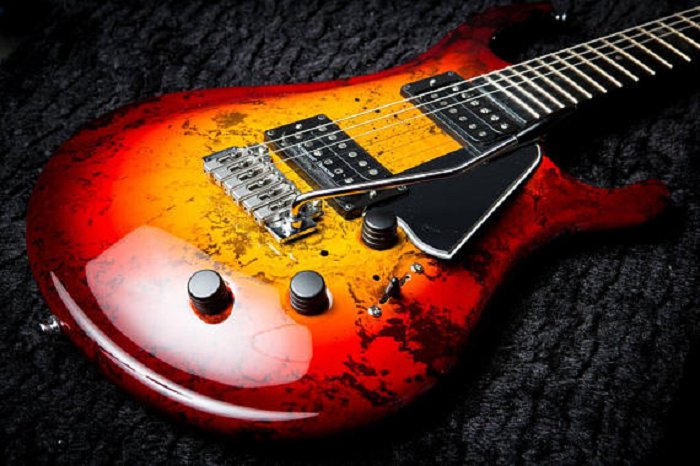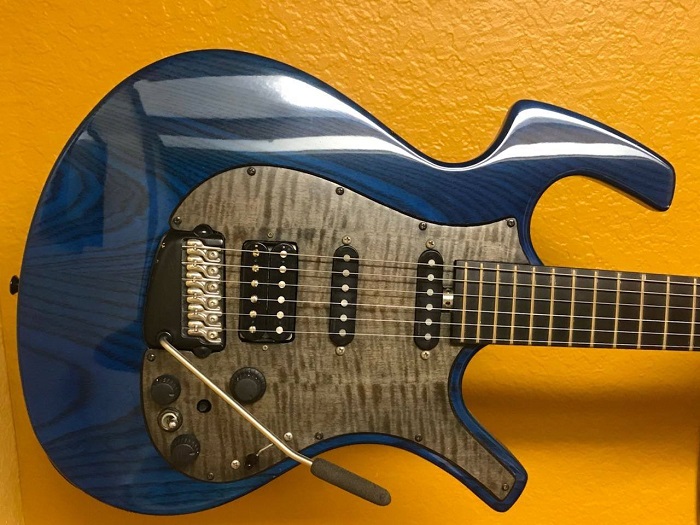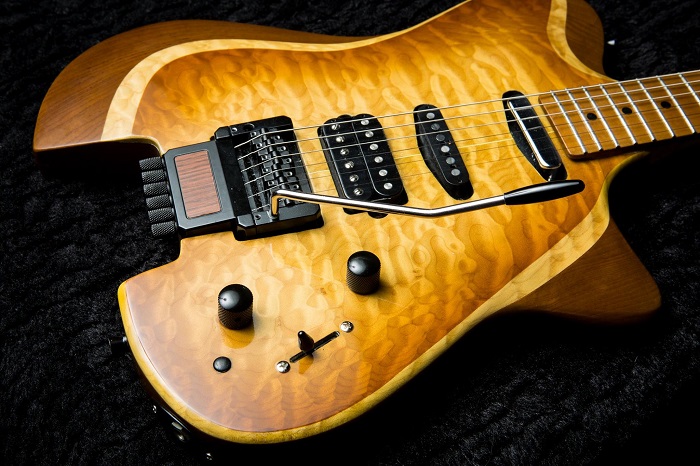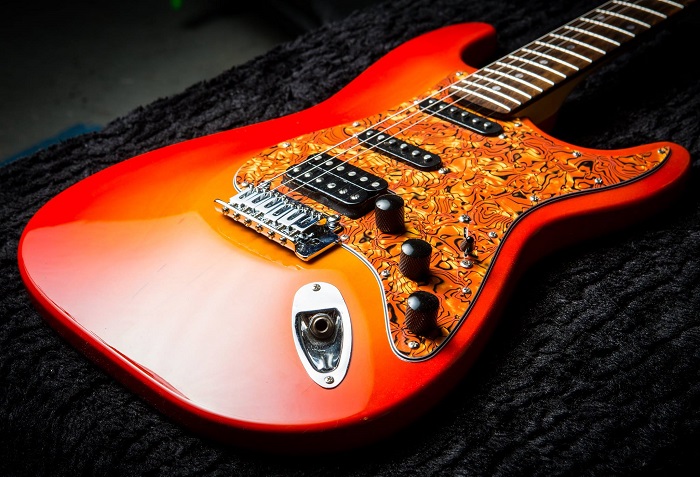I hate to use Parker Guitars as an example, because Ken Parker is such a great guy and a personal hero
of mine. For me, he's up there with Les Paul, Leo Fender, and Ned Stienberger as far as guitar design
innovators are concerned. I’m sure that the Parker company has had to bow to market dictates and it’s
investors. Towards the end, many of the changes it adopted were more about making money than making better
guitars. So since Parker guitars are no longer made in the US, and Ken Parker is no longer part of it,
let's talk phantom value in Parker Guitars.
The best way to do this is by comparing two specific models. The Fly Deluxe, and the Fly Artist are
identical guitars except that the Deluxe uses a poplar body and is painted while the Artist uses Spruce
and has a clear coat. That's it! Everything else is the same. The Deluxe and The artist share the same
body shape and hardware. There are small cosmetic differences. The Sperzel tuners on the Artist are black
as opposed to the satin chrome ones on the Deluxe.
Yet the Artist's price tag is about $2,000 more than the Deluxe! 2,000 dollars is a lot of money to
pay for a few pounds of spruce. Maybe if the Artist was made from the timbers of Columbus' ship the Santa
Maria this would make sense. But it's not. This is phantom value.
To add to the confusion, there is a growing movement of luthiers and guitar players who don't believe
that wood has anything to do with a solid body guitar's sound. Acoustic guitars are admittedly different,
but to them a solid body's sound comes entirely from its pickups. To them, there's no such thing as tonewoods
as far as solid bodied electrics are concerned.
Personally I believe that wood does affect the overall sound of a solid body. I've been a player for
more than 35 years and I do hear it. The way I see it, everything solid has a resonant frequency, and
sound bouncing around a medium with a resonant frequency will get colored somehow. But the reality is
that the sound from the wood needs to bounce back to the strings loudly enough to be heard by the pickups
to make an impact on the listener’s ears. It's there. But what I think is happening is that it's so subtle
some people simply can't hear it, even some professionals.
Some manufacturers would like you to believe the prettier the wood, or the more exotic, the prettier
the sound. One thing’s for sure, the prettier the wood, the prettier the guitar, and the more expensive.
Exotic wood just means a species closer to extinction, and more expensive. It doesn’t necessarily mean
a better tone. A quilted maple top doesn’t sound any better than a non figured maple top. The later being
more acoustically desirable in some applications.
Tone woods do have their sounds though. I love the sound of mahogany, it's pretty, not too expensive,
readily available, and has a nice warmth to it. But people don’t realize that the actual species of mahogany
(Swietenia Mahagoni) used in making all those lovely, expensive, vintage guitars is gone! The species
they replaced it with (Swietenia Macrophylla) has also been commercially extinct since 2003. All commercially
available mahogany now is traded as "true" mahogany. And it's not the stuff that was used traditionally.
The "true" is a marketing label used to boost buyers confidence in the product. In other words, we haven't
had REAL mahogany for years.
So it’s kinda ridiculous to be a total tonewood snob, or be all high and mighty about purity and tradition.
Because unless you have a stash of really old mahogany (or a freakin’ time machine) the mahogany you’re
using today is a different species altogether. Honduras, and African Mahogany used on high end, expensive
guitars are actually alternatives to the alternative. They are the next best choices because they approximate
the sound of real mahogany.
The truth is, every piece of Mahogany, or any wood for that matter, will sound different from batch
to batch even when it’s from the same tree. The wood can even sound different across the length of the
piece. That’s because wood was once alive, and many factors affect its growth and therefore its grain.
When I first published this article on the Alethean FB page about a year ago Indian Rosewood wasn’t
CITES protected and considered endangered. Rosewood is traditionally used in fretboards and is a semi
oily wood that doesn’t need a finish. It also imparts a darker EQ to the total sound compared to a Maple
fretboard. Indian Rosewood was an alternative to the more sought after but commercially extinct Brazilian
Rosewood. Today all species of Rosewood, or any instruments, whole, or with parts thereof are illegal
to import across national lines. That means for everyone builders and players alike, there’s a very finite
supply of the raw wood. It could also mean old cheap instruments with rosewood fretboards could see a
drastic appreciation in price in the coming years.
So what does one do when many of the traditional woods used in luthiery are going the way of the Dodo?
We find alternatives. We can either go the synthetic route and use materials like carbon fiber which
has been successfully used in making fine acoustic instruments. Use a hybrid material like Flaxwood,
which is a composite made from an acoustic thermoplastic mixed with treated spruce fibers. Or simply
look for alternate woods other than those traditionally used.
Using alternative woods could mean matching these new woods to different pickups to come closest to
what we’ve all come to expect as classic electric guitar tones. Much of the electric guitar’s sound will
be determined by its pickups. Wire thickness, number of winds, and magnet material, and baseplate meterial
are just some of the things that influence a pickup’s sound. Because all blocks of wood, even from the
same tree will vary sonically, here at the shop, after every new custom build, we experiment with Copper
bobbin shielding, different capacitor values, resistor loads, and Alnico magnets to tweak tone towards
a user’s preferences and playing style. It is amazing how 30 cents worth of copper shielding, a 20 cent
resistor, or a 6 dollar magnet can have a more discernible impact on sound than a 200 dollar AAAA flamed
Maple drop top.
The good news is that Alder and Swamp Ash are still in good supply; and Kaya, and Sapele have been well
received as suitable mahogany replacements. Swamp Ash is particularity interesting because major guitar
manufacturers in the past have touted it as rare when it was not. Swamp Ash is actually is cheaper than
Mahogany or Maple. Again, this is Phantom Value. Through marketing it can certainly add to the real world
value of an instrument. But it is neither something you can hear, feel, or see.








